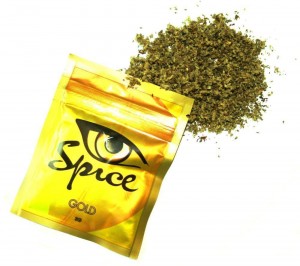Synthetic Marijuana Comes with Serious Risks, Including Risks to Fetus
Synthetic marijuana, otherwise known as spice, skank, or K2, is not only vastly more potent than the tetrahydrocannabinol (THC) in marijuana plants, but it also lacks cannabidiol (CBD), the calming, antipsychotic substance also present in the plants. This makes spice much more likely to induce major psychiatric effects.
New evidence links use of spice during pregnancy to a tragic birth defect, anencephaly, or absence of the cerebral cortex. It can also lead to the later development of attention-deficit hyperactivity disorder, learning disabilities, memory impairment, depression, and aggression.
of spice during pregnancy to a tragic birth defect, anencephaly, or absence of the cerebral cortex. It can also lead to the later development of attention-deficit hyperactivity disorder, learning disabilities, memory impairment, depression, and aggression.
Effects of THC on gestation may occur as early as two weeks after conception, meaning by the time a woman realizes she is pregnant, the fetus may have been harmed by exposure to the drug.
Other new finding associate use of spice with acute coronary syndrome and the kind of acute kidney injury that can lead to the organ shutting down.
Editor’s Note: It has now been found that synthetic marijuana, or spice, can lead to psychosis, delirium, acute coronary syndrome (heart attack) in young people, and now kidney dysfunction, in addition to causing birth defects if used by pregnant women. Not only is spice made up of more potent THC without the calming effects of CBD, but it is often laced with unknown contaminants, which are likely the cause of the heart and kidney damage.
Smoking regular marijuana is bad enough—it doubles the risk of psychosis and may precipitate the onset of schizophrenia. It may also cause long-lasting effects on cognitive function. Since many states are legalizing marijuana, it is important to know the risks. In any case the risks are much more serious with the synthetic product, and synthetic marijuana should be avoided at all costs.
Psychosis Risks with Marijuana Use
 At a recent conference Robin Murray, a researcher based in London, gave a talk about the potential adverse effects of tetrahydrocanabinol (THC). Considerable data indicate that chronic long-term smoking of marijuana is associated with the doubling of the risk of psychosis. Moreover, if a marijuana user has a common genetic variant in the catechol-o-methyltransferase enzyme (COMT), they are at substantially increased risk for the development of psychosis. New data also indicate that frequent use of marijuana can also be associated with an earlier onset of schizophrenic psychosis than would ordinarily occur without the substance use. Data also suggest that the psychosis associated with THC use is more difficult to treat than that without such use.
At a recent conference Robin Murray, a researcher based in London, gave a talk about the potential adverse effects of tetrahydrocanabinol (THC). Considerable data indicate that chronic long-term smoking of marijuana is associated with the doubling of the risk of psychosis. Moreover, if a marijuana user has a common genetic variant in the catechol-o-methyltransferase enzyme (COMT), they are at substantially increased risk for the development of psychosis. New data also indicate that frequent use of marijuana can also be associated with an earlier onset of schizophrenic psychosis than would ordinarily occur without the substance use. Data also suggest that the psychosis associated with THC use is more difficult to treat than that without such use.
Murray also reported on a new risk that is associated with more potent new products. Older, natural forms of marijuana contained a compound called cannabidiol, which is associated with calming effects and possible antipsychotic effects. In a new synthetic preparation of THC called skank or spice, there is a higher amount of THC, but none of the positive diol compound. Thus there are some important caveats to the prevailing view that marijuana is relatively harmless.
Editor’s Note: Marijuana use brings a clear-cut increased risk for psychosis, which appears to interact with a common gene polymorphism and which is increased with use of a new synthetic preparation called skank or spice. If a marijuana user has a concurrent mood disorder, the risks appear to be even greater. The one sure pharmacological effect of marijuana is an amotivational syndrome, and motivational deficits are one of the core components of depression.
Given the difficulty of treating the mood and schizophrenic disorders, a patient should not risk worsening their illness with marijuana. N-acetylcysteine is one treatment option that may bring about decreased craving for and avoidance of marijuana and a number of other abused substances, as well as being helpful for mood and negative symptoms in schizophrenia.

